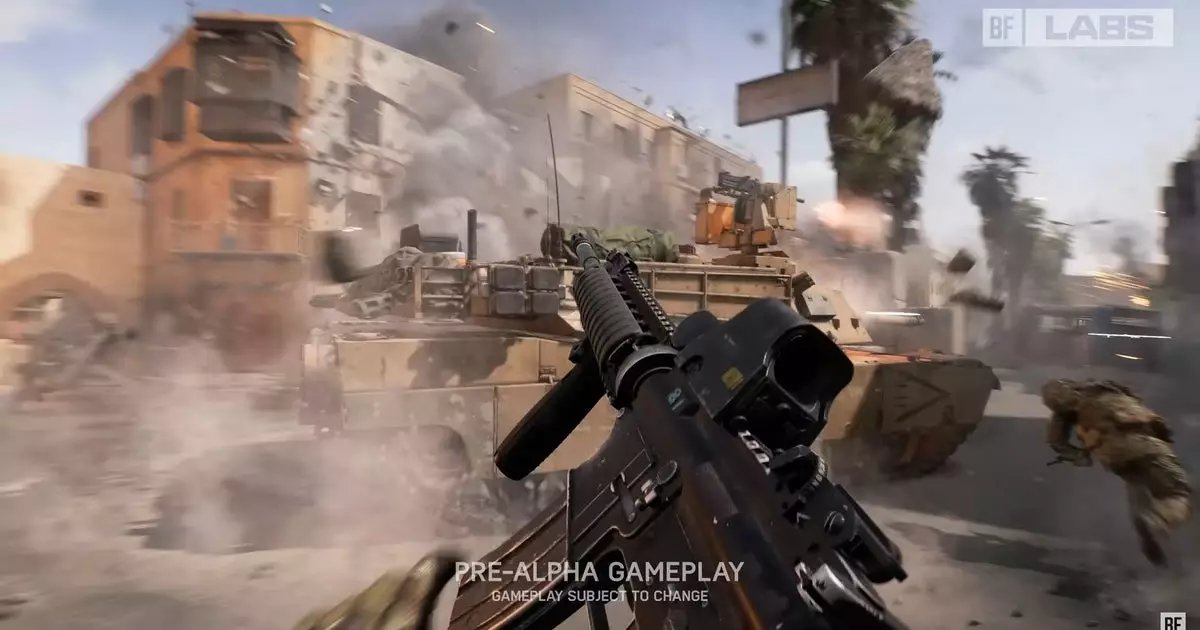The gaming world is buzzing with anticipation for the upcoming installment in the Battlefield franchise, often referred to as Battlefield 6. A recent promotional video has ignited discussions among fans and critics alike, showcasing snippets of explosive in-game action, which have become the hallmark of this series. The video, rife with sounds of destruction and snippets of ravaging warfare, primarily served as a platform for producers from several distinguished studios to espouse their vision for the game. While it is compelling to hear the enthusiasm regarding “enhancing the core experience,” the video does not stray far from the franchise’s established formula of heavy artillery and pixelated carnage.
The promotional material features a medley of developers from Dice, Criterion, Motive, and Ripple Effect—each contributing to the evolving narrative of the game. However, one must temper excitement with skepticism. The emphasis on corporate synergy may appear reassuring, yet it raises questions about creativity and independence among the studios. Notably, Criterion’s involvement raises eyebrows as the studio is reportedly sidelining its own flagship project to contribute to Battlefield. This scenario leads fans to ponder whether such collaboration detracts from individual studio identities and goals.
Gamers have come to expect thrilling single-player campaigns, intense multiplayer settings, and dynamic environments from the Battlefield series. The promotional video reiterated familiar concepts, but the mention of “Battlefield Labs” introduced an intriguing twist. This initiative, inviting public participation for playtesting, symbolizes an attempt at community engagement—a strategy designed not just to build anticipation but to create a buzz around an evolving product. However, one must critically evaluate whether this is indeed a genuine effort to listen to player feedback or merely an attempt to obfuscate the realities of ongoing development challenges.
The collective efforts of four studios, while enticing, spark skepticism due to the historical context surrounding such collaborations. The absence of Ridgeline Games, a studio that was once touted to contribute to the campaign and was headed by industry stalwart Marcus Lehto, looms large in this discussion. The closure of Ridgeline Games serves as a reminder of the volatile nature of game development under the banner of large corporations like Electronic Arts. Fans might question whether unity translates into a more robust product or merely showcases the industry’s propensity to consolidate resources, often at the cost of innovation.
As the dust settles from the promotional video, players remain cautiously optimistic about what Battlefield 6 will ultimately deliver. There is nostalgia and excitement centered around the franchise’s trademark gameplay mechanics, yet a careful examination of corporate dynamics and creative input raises significant questions. Will it build upon the successes of its predecessors or risk becoming an amalgamation of industry politics? As the release date approaches, only time will reveal where the battlefield is headed. Until then, players remain eager but watchful, ready to don their helmets at a moment’s notice.


Leave a Reply